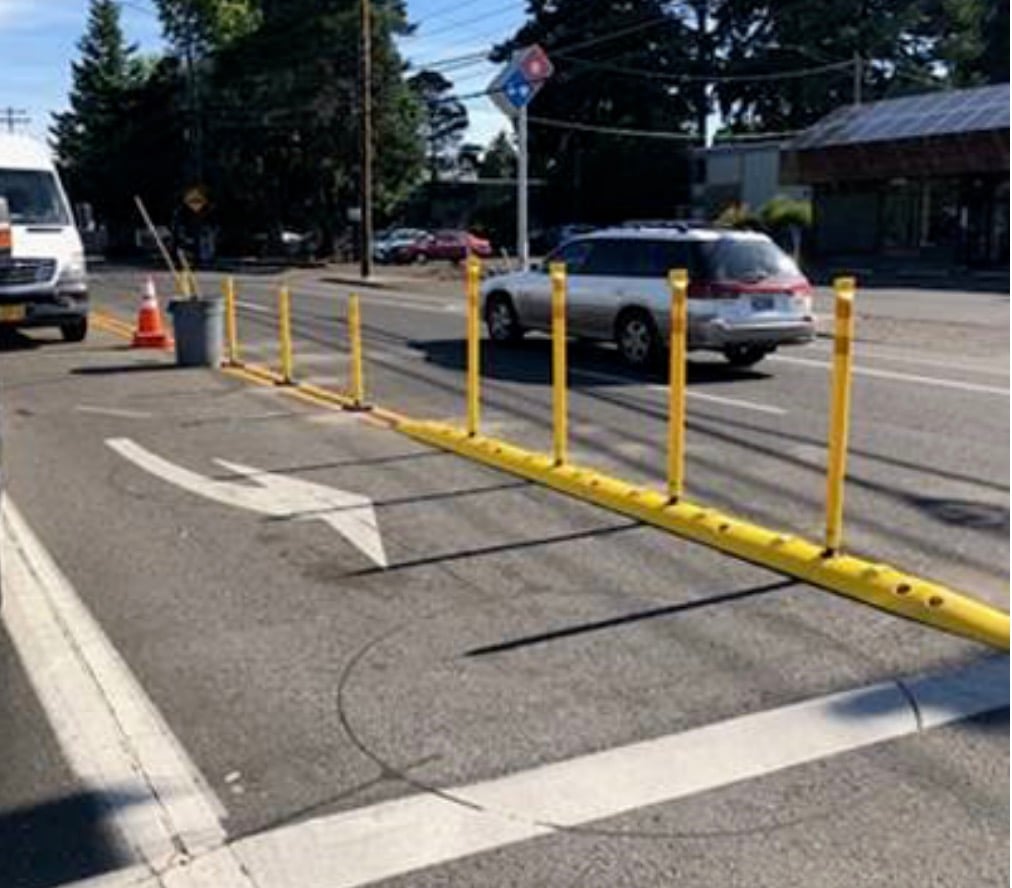
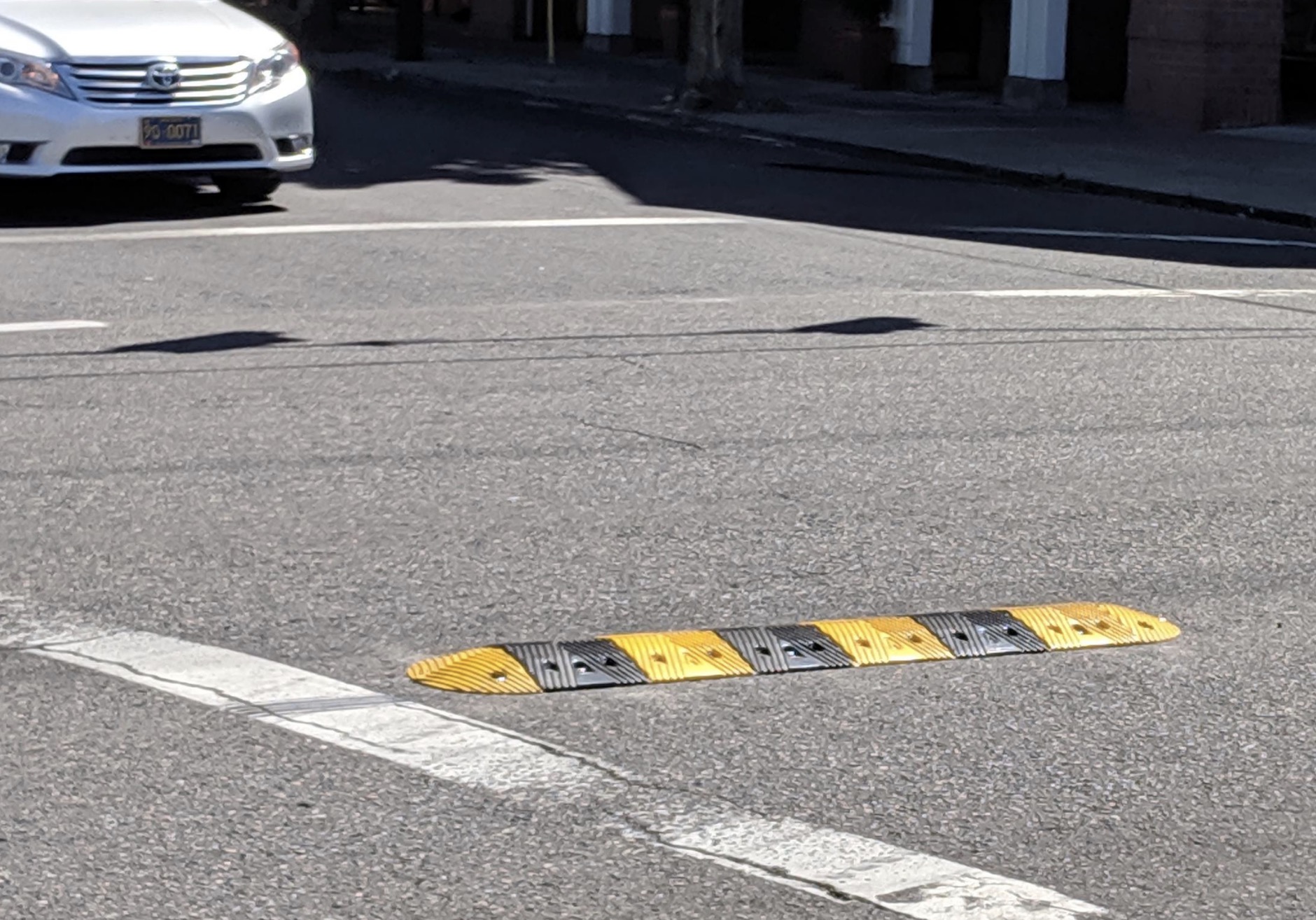
Armed with data, plans, and support from city council, the Portland Bureau of Transportation is moving forward with a pilot program to install “left turn calming” at 29 intersections.
Using a mix of rubber speed bumps and centerline delineator wands, PBOT’s aim is to slow drivers down, prevent them from “cutting corners”, and make it easier for them to see people crossing the street.
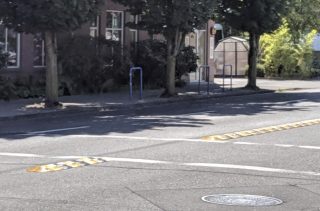
(Photo: Terry Dublinski-Milton)
This type of basic and relatively cheap infrastructure might have saved the life of Charles McCarthy. In October 2018 McCarthy was walking across East Burnside at 55th when he was struck and killed by someone driving a truck. The truck operator was turning left from 55th onto Burnside. (See animated GIF below the jump.)
With the the safety of walkers a top priority in their Vision Zero program and in the recently adopted PedPDX Plan, PBOT has installed rubber speed bumps at the intersection where McCarthy died. The move is also part of PBOT’s new “crash response protocol” released by PBOT back in April. That directive, spearheaded by new Bureau Director Chris Warner, says that PBOT will evaluate fatal crashes and implement, “targeted rapid response safety fixes” whenever possible.
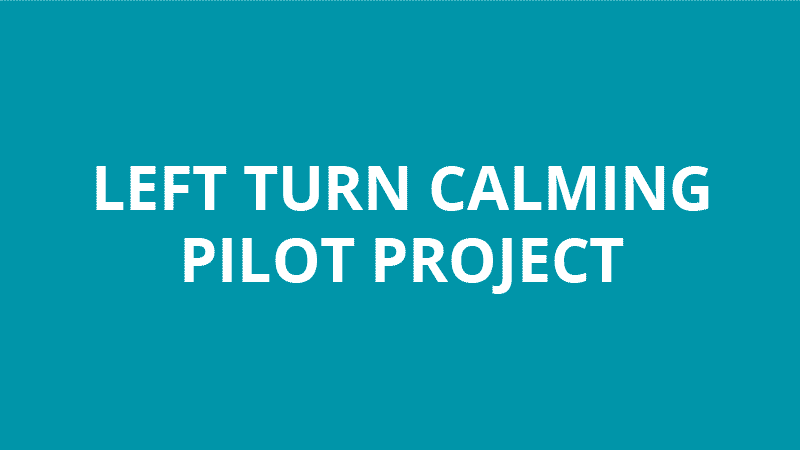
Advertisement
GIF by PBOT
PBOT says they hope to address 40 intersections with the new left-turn treatments this year and expand the program in 2020 if it has a positive impact. In their 2-Year Vision Zero update adopted by city council last week, PBOT cited a similar program in New York City (who has implemented them at 300 intersections so far) that has resulted in a decrease in average speeds of left-turning drivers from 7.7 mph to 4.3 mph.
Funding for this program comes from the local sales tax on recreational cannabis. That tax amounted to $4.6 million in Fiscal Year 2019, 79% of which was spent on “public safety” programs including Vision Zero safety projects.
According to State of Oregon data, 20% of crashes involving walkers (between 2006 and 2015) were the result of left-turning drivers failing to yield to people in crosswalks at signalized intersections.
Learn more about the type of intersections that qualify for this treatment and see the list of the first 29 locations on PBOT’s website.
— Jonathan Maus: (503) 706-8804, @jonathan_maus on Twitter and jonathan@bikeportland.org
Never miss a story. Sign-up for the daily BP Headlines email.
BikePortland needs your support.


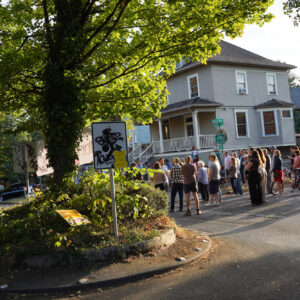

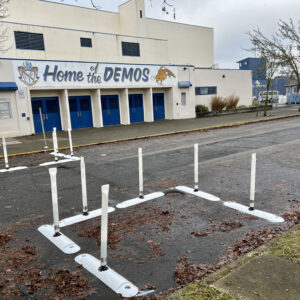

Thanks for reading.
BikePortland has served this community with independent community journalism since 2005. We rely on subscriptions from readers like you to survive. Your financial support is vital in keeping this valuable resource alive and well.
Please subscribe today to strengthen and expand our work.
sure hope things get better, lotta bad interactions lately.
if they were made of metal with pieces designed to shred body parts off the car, they might make a difference.
I think so too. But, large vehicles, fire trucks, transit vehicles, delivery vehicles, have considerable off-tracking during turns. Having a shredder would cause some serious problems for them.
The before car would crash into a waiting vehicle in the eastbound lane. Nonetheless, this will be a good change if it works. And cheap, too.
I mean, that happens too, particularly if cars are rolling into the (stopped) left lane as the left-turning traffic is going.
Were charges ever filed against the driver who killed Charles McCarthy? Did the driver receive any punishment if charges were filed?
Sounds good…as I am often almost hit as a waiting car driver by left turning drivers too…in addition as a waiting cyclist. (Though any idea if PBoT will be adding any reflectroiczted RPMS to highlight these bumps for low light situations…especially for through cyclists and turning motorcyclists?)
Those speed bumps in the photo are too low to make much of a difference. Heck, the pot holes are deeper than that.
Shame we can’t get people to look around the A-pillar in their own cars, but if this is what it takes… OK, then.
Cool animation. If the results from NYC are accurately summarized above I already like this. Thanks for the story.
PS You have published a great string of stories this week!
P.P.S is anyone else no longer receiving *any* email notifications after checking the ‘notify me of followup comments’ box? This has happened before, and ultimately it seemed like there was an easy fix. Unless I am the only one experiencing this.
The A-pillar of the 2014 Toyota Corolla I occasionally drive is four times thicker than that of the 1970 SAAB 99 that remains my all-time favorite car.
The Corolla also has weird electric power steering that makes it impossible to track a straight line on a highway; with one’s hands on the wheel it wants to drift from one side of the lane to the other, back and forth, requiring continual corrections. I have researched this phenomenon, finding it common in many cars, and well known among automotive journalists. Sometimes electric power steering cannot keep up with rapid corrections applied by a skillful driver and the car self-crashes.
SAABs were designed by engineers imbued with airplane-like criteria. (But not the 737 Max.) Current cars are designed by marketing gurus assisted by focus groups. So long as they conform to (often questionable) “safety standards” they are “acceptable.”
The wider A-pillars are really a problem, in that drivers aren’t being properly trained to look around them. I first noticed this in late-2000s cars, and almost hit a pedestrian walking perpendicular to me, because he never left my blind spot as I came to a stop. I learned to move my head from side to side as I approach crosswalks, to make sure I’m not missing anyone, but unfortunately most drivers don’t even seem aware of the issue.
I’ve rented Corollas of that generation a couple times for road trips; I would agree they are the absolutely worst example of EPS that I’ve driven. There is no road feel whatsoever, and the car has no interest in going down the highway in a straight line. Many cars with EPS seem to have some degree of this (I notice it a bit on Hyundais, as well as the Prius) but not all of them, and none anywhere near as bad as the Corolla in my experience.
Sounds more like tie-rod ends but okay. Or maybe people over-correct, nope never seen that.
Why is it that left-turning drivers almost never look at the crosswalk to their left?
Yesterday I was walking my bike in a crosswalk and the driver turning left ahead of me, coming toward me and turning left, had to slam on his brakes to keep from hitting me in the sidewalk. Fortunately I was able to wave my arms and make eye contact with the driver before he hit me. This was also an intersection where the crosswalk is governed by a “WALK” light, which I had activated, but the driver apparently hadn’t noticed that, either.
The only thing I can think of is that this intersection doesn’t see many walkers, so maybe drivers almost NEVER see walkers in the crosswalk and are not trained to look for them? I long for the day when we have “smart” intersections where the signals activate warnings within the driver’s little womb of invincibility (aka the inside of the car). The warnings should override all music, cellphone conversations, etc. After all, driving is serious business; it’s not just a joy-ride.
What gets me is ..if a ped hits the beg button, why in the effing world does the ped have a walk light and parallel traffic even get to move at the same time? Wtf?